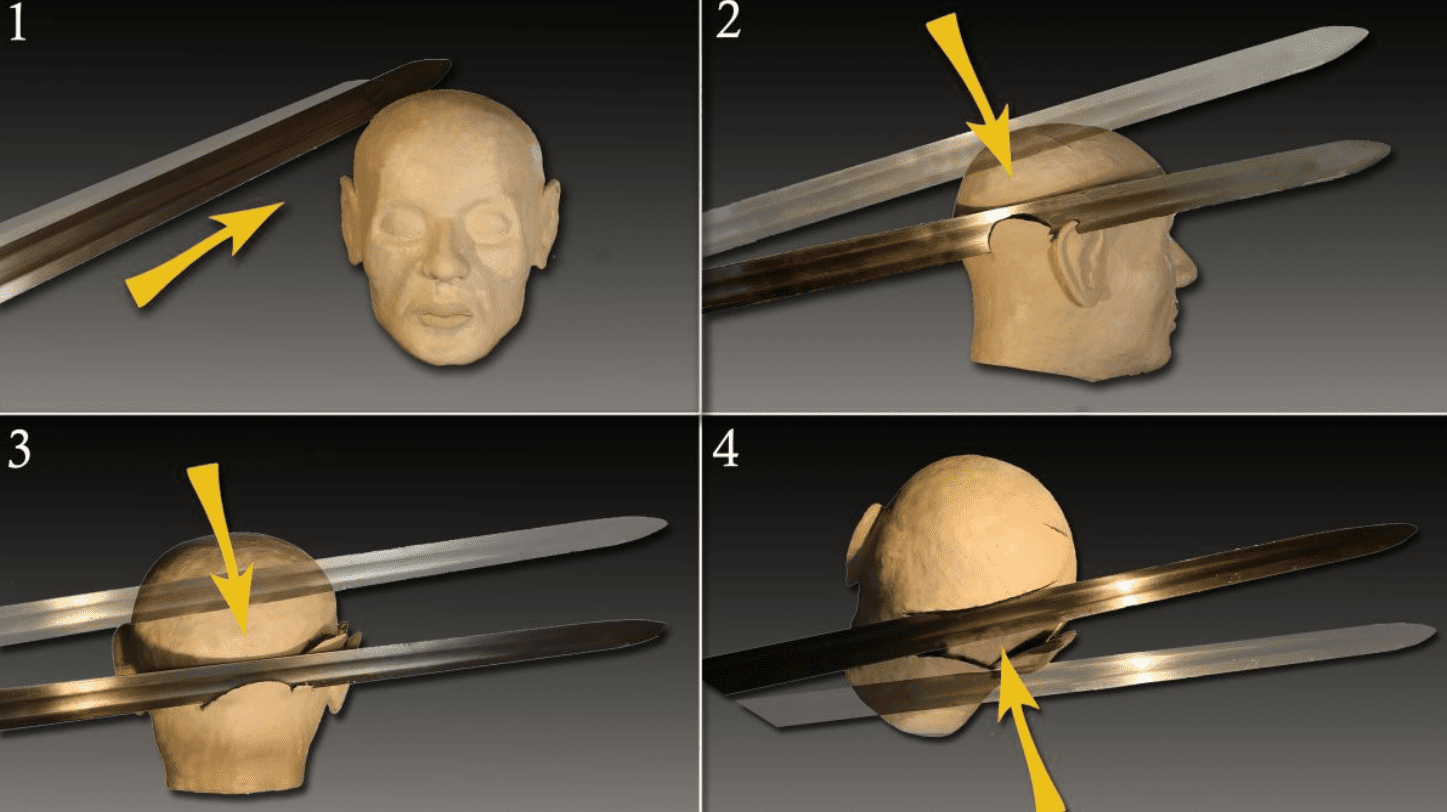A medieval cold case has been solved by a team of archeologists in Italy. According to their scientific sleuthing and his shattered skull, this young man was most likely killed by four sword blows to the head in what sounds like a deeply unpleasant execution.
The person was first unearthed during archaeological excavations inside the church of San Biagio in Cittiglio, Northern Italy. This work was funded by Fondazione Cariplo and Fondazione Comunitaria del Varesotto.
Radiocarbon dating revealed the body was buried at some point between the 11th and 14th centuries CE, while an analysis of the bones showed the remains belonged to a young adult male, between the ages of 19 to 24 years old, who was around 165 to 174 centimeters (5 feet 4 inches to 5 feet 8 inches) tall.
To get the scoop on his cause of death, researchers from the University of Insubria and the University of Sienna studied the skull using a variety of imaging techniques, including CT scans, three-dimensional reconstruction, and 3D digital microscopy.
Cracks in the skull revealed clear evidence of four sword blows. The first appears to have clipped the top right of his head. Stunned, he may have slightly turned his head to evade the attack but was hit with another blow to the right of his skull, which likely rendered him disabled. At this point, he was most likely lying face down and two heavy blows were given to the back of his head.

The four sword blows that sealed the man’s fate. Image courtesy of Stefano Ricci/Jacopo Crezzini/University of Siena
Notably, the skeleton doesn’t have any defensive wounds, such as marks on the hands and forearms where the victim has raised them to protect their head from assault. This suggests the fatal attack was swift and most likely unexpected.
“Deliberate attempts at attacking the victim at the most vulnerable body part are clearly expressed. This finding suggested that the strategy of the assault was to incapacitate and quickly kill the victim, without conceding him the time to react or defend himself,” the study authors wrote.
“This may imply that the victim was taken by surprise and that he did not have time to react against the opponent,” they added.
Having been buried in front of the ancient entrance to the church, the researchers assume that he held a high social status. Perhaps, they speculate, this put the individual at a higher risk of being murdered.
While the team doesn’t believe it’s possible to decipher the motive behind the murder, they say it’s clear the perpetrator meant business.
“It is evident that this type of deadly aggression, aimed at completely annihilating the victim, leaves us incredulous about the possibility of it being the result of a simple motive,” the study authors note.
The study was recently published in the Journal of Archaeological Science: Reports.
Source Link: Victim Of Gruesome Medieval Murder Had Four Sword Blows To The Skull